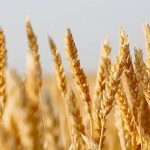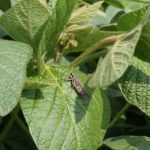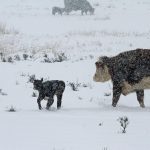The Canadian agricultural sector is under pressure as U.S. President Donald Trump is expected to announce more tariffs on April 2. Prime Minister Mark Carney has pledged retaliation.
News

U.S. spring wheat the lowest since 1970
The main headlines in the USDA Prospective Plantings report deal with the expected corn and soybean plantings. Corn area came in above expectations at 95.326 million acres which is up by five per cent from last year. Soybean area dropped by four per cent to 83.495 million acres. In Western Canada the real interest is […] Read more

Canadian farm groups speak out on tariffs
Manage tariffs first and then talk retaliation if necessary, say organizations
Canadian farm groups say first U.S. tariffs need to be managed, then retaliatory action can be considered.

Policy institute calls for open review of ag spending
It’s been 13 years since agricultural spending was reviewed, and some programs may no longer meet producer needs
A full-scale review of Canadian agricultural spending should be a top priority in this time of global uncertainty, said a new report from the Canadian Agri-Food Policy Institute.

Alberta-based Sunterra companies in financial, legal trouble
UPDATE (June 9, 2025): Sunterra’s U.S. hog subsidiaries have been sold to Tyson Foods following allegations of financial fraud. Read the full story: Sunterra’s American assets sold to Tyson REGINA — Alberta-based Sunterra Farms has filed notice for protection under federal bankruptcy and insolvency laws to restructure itself financially while three of its U.S. subsidiaries […] Read more

U.S. farmers to plant more corn, less soy
The USDA is forecasting 45.4 million acres of all wheat, down two percent from 2024 levels
The USDA is forecasting 45.4 million acres of all wheat, down two percent from 2024 levels

Saskatchewan claims carbon tax-free status
The Saskatchewan government said it would no longer collect the ‘silent’ carbon tax applied to large emitters
Saskatchewan’s decision to pause collecting the industrial carbon tax has met with approval but also questions about where the province will find the $431.5 million the Output Based Performance Standards (OBPS) fund was to contribute to this year’s budget.

Canada should increase canola consumption
The domestic market for the crop is already large, but an energized renewable diesel sector could increase local demand
Canada should increase domestic demand for canola

Spring weather can be tough to forecast
Spring weather across our region is mostly caused by the battle between two air masses — one cold and to our north, and the other warm and to our south — and they are both at their strongest relative to each other at this time of the year.

Carney says supply management “off the table” in negotiations
Supply management won’t be part of trade negotiations and tariff discussions, Prime Minister Mark Carney said on Friday.




